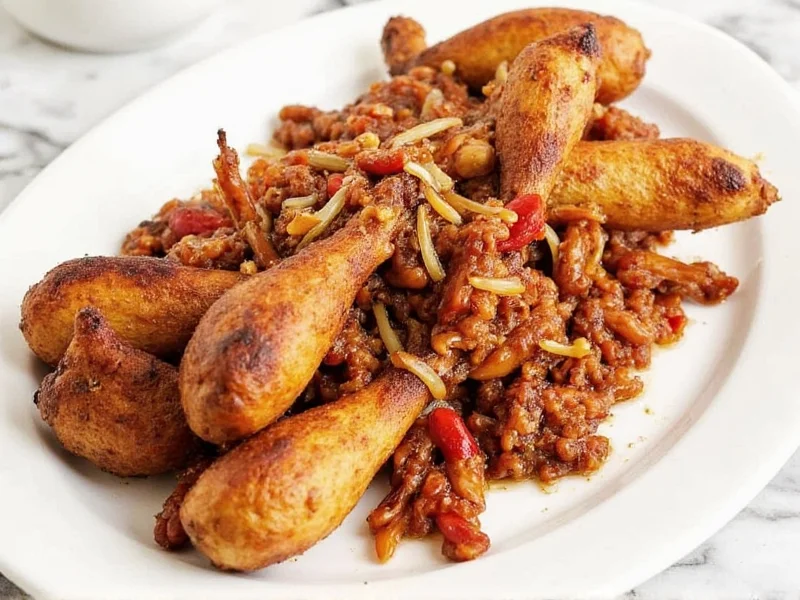Many diners struggle to distinguish between these two iconic Louisiana culinary traditions, often encountering both terms on restaurant menus with little explanation. This confusion stems from decades of oversimplification and marketing that has blurred the historical and cultural distinctions between these rich foodways.
Historical Roots: Understanding the Cultural Origins
The story begins with the 1755 Grand Dérangement, when the British expelled French-speaking Acadians from Canada's Maritime provinces. These displaced families eventually settled in rural areas of south Louisiana, bringing their French culinary traditions but adapting to available ingredients. This resourceful, farm-to-table approach evolved into what we now call Cajun cuisine.
Meanwhile, Creole culture developed earlier in the 18th century within the established colonial port city of New Orleans. The term "Creole" originally referred to people of European descent born in the colonies, but evolved to encompass a diverse mix of French, Spanish, African, Caribbean, and Native American influences. This cultural melting pot created a sophisticated urban cuisine that incorporated ingredients like tomatoes, butter, and cream unavailable to rural Cajun communities.
Culinary Distinctions: Beyond the Roux
While both cuisines feature the "holy trinity" of onions, celery, and bell peppers, their preparation methods and ingredient choices reveal significant differences. Understanding these distinctions helps appreciate each tradition's unique character.
| Characteristic | Cajun Cuisine | Creole Cuisine |
|---|---|---|
| Origin | Rural Louisiana (Acadiana) | Urban New Orleans |
| Key Influences | French peasant cooking | French, Spanish, African, Caribbean |
| Tomato Usage | Rarely used historically | Common ingredient |
| Roux Color | Dark brown (for flavor) | Blond to medium (for thickening) |
| Signature Dish | Chicken à la Calasauce | Shrimp Étouffée |
| Cultural Context | Rustic, resourceful cooking | Sophisticated urban cuisine |
Debunking Common Misconceptions
One persistent myth claims that "Cajun food is spicy while Creole food is not." This oversimplification ignores the nuanced reality. Both traditions use spices thoughtfully, with heat levels varying by cook and dish rather than cultural tradition. The misconception likely stems from 20th century restaurant marketing that labeled anything spicy as "Cajun" to capitalize on the cuisine's rustic image.
Another frequent error involves the "Cajun/Creole spice mix" found in grocery stores. Authentic Louisiana cooking rarely relies on pre-mixed spice blends. Traditional cooks develop flavors through careful layering of ingredients and techniques passed down through generations, not standardized spice mixes.
Modern Interpretations and Cultural Evolution
Today, the lines between Cajun and Creole have blurred through cultural exchange and creative interpretation by chefs. Many contemporary Louisiana restaurants feature dishes that blend elements from both traditions. This evolution reflects Louisiana's dynamic food culture while sometimes complicating efforts to preserve historical distinctions.
When examining authentic regional cooking, however, the differences remain clear. Traditional Cajun boudin contains pork, rice, and spices stuffed in casing, reflecting resourceful use of available ingredients. Classic Creole dishes like pompano en papillote demonstrate French technique with local fish, baked in parchment with tomatoes and wine.
How to Identify Authentic Representations
When encountering Cajun or Creole dishes, look for these authentic markers:
- For Cajun: One-pot preparations, darker roux, smoked meats, limited tomato presence, and rustic presentation
- For Creole: More complex sauces, tomato-based elements, refined techniques, and historical connections to New Orleans
Understanding the difference between Cajun and Creole food traditions enhances appreciation for Louisiana's rich culinary heritage. The next time you encounter these terms on a menu, you'll recognize whether you're experiencing the hearty, resourceful cooking of the Acadian countryside or the sophisticated fusion of New Orleans' historic melting pot.
Frequently Asked Questions
Is Cajun food always spicier than Creole food?
No, this is a common misconception. Heat levels vary by cook and dish in both traditions. The myth likely originated from 20th century restaurant marketing that labeled spicy dishes as "Cajun" to capitalize on the cuisine's rustic image.
What's the main difference between Cajun and Creole roux?
Cajun roux is typically cooked to a dark brown color for deeper flavor, sometimes taking hours to prepare. Creole roux is usually blond to medium brown, primarily used for thickening rather than deep flavoring, reflecting the more refined techniques of urban Creole cooking.
Why don't traditional Cajun dishes use tomatoes?
Historically, tomatoes didn't grow well in rural Louisiana's climate where Cajun culture developed. The Acadian settlers adapted their French peasant cooking to available ingredients, creating dishes without tomatoes. Creole cuisine in New Orleans incorporated tomatoes through trade connections with the Caribbean and Mediterranean.
Can a dish be both Cajun and Creole?
While some modern interpretations blend elements, traditionally a dish belongs to one tradition or the other. The distinction lies in historical preparation methods and cultural context. Contemporary chefs sometimes create fusion dishes, but understanding the original differences helps appreciate each tradition's unique heritage.
How did the confusion between Cajun and Creole cuisine develop?
The confusion grew during the 20th century as restaurants outside Louisiana simplified the distinctions for marketing purposes. The "Cajun food craze" of the 1980s-90s further muddied the waters as chefs applied the "Cajun" label to any spicy dish, regardless of authenticity. This commercialization overshadowed the historical and cultural differences between the two traditions.











 浙公网安备
33010002000092号
浙公网安备
33010002000092号 浙B2-20120091-4
浙B2-20120091-4